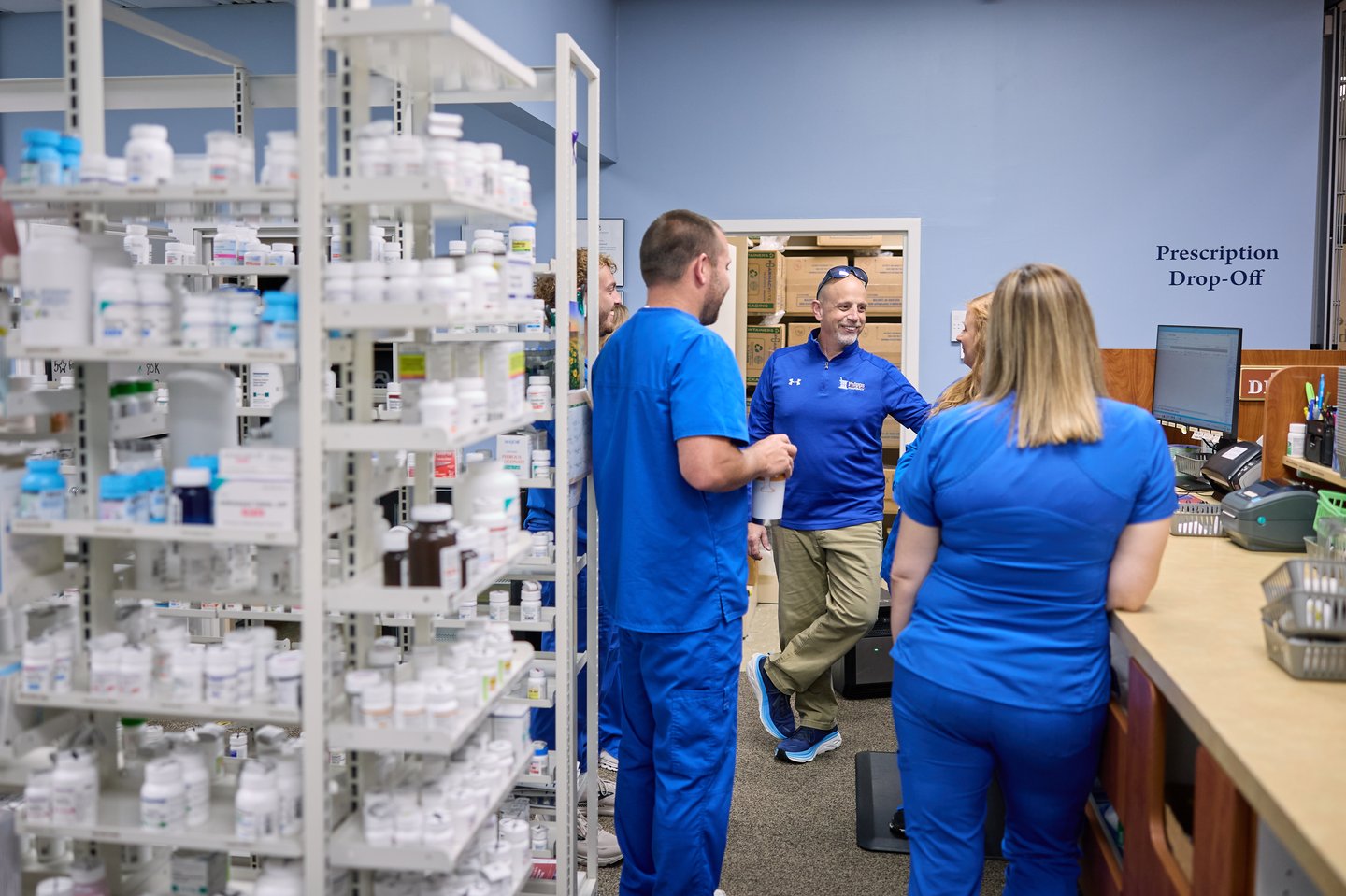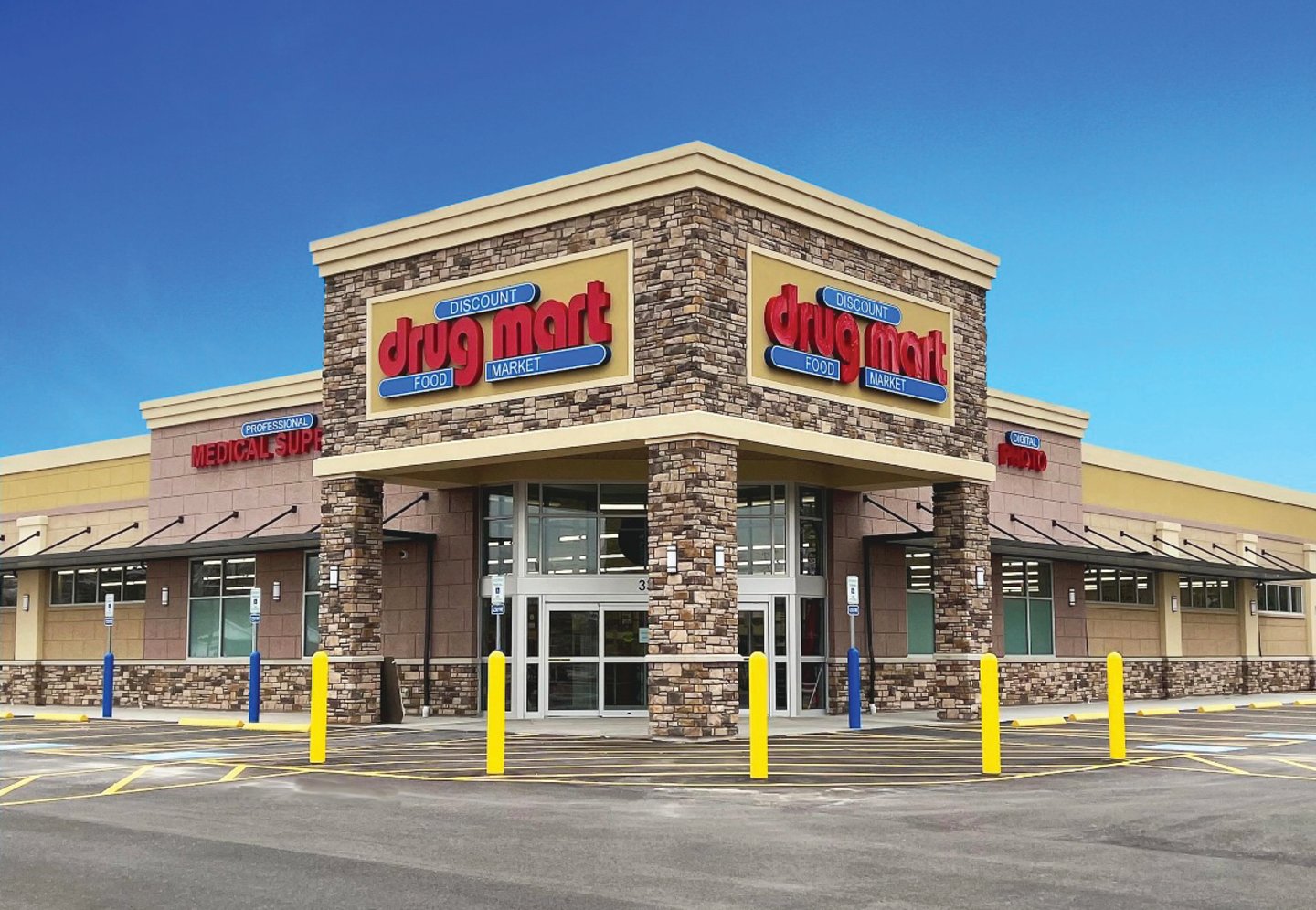Customers seek out local, accessible chain pharmacies
It’s no secret that Walgreens, CVS Health and Rite Aid are struggling. After all, news outlets across America have shared the recent woes of the “big three” U.S. national chain pharmacies, including prescription-reimbursement declines, rising costs, online competition, store closings and employee layoffs.
U.S. regional chain pharmacies, meanwhile, appear to be better positioned to weather the storms.
[Related: The latest pharmacy headlines]
Connected to their communities
One advantage that regional chain pharmacies have over national chains is the ability to provide a greater level of care, said Lara Knudsen, vice president of program operations with Conshohocken, Pa.-based Good Neighbor Pharmacy. Good Neighbor Pharmacy is a national franchise network for independent pharmacies that includes regional chain pharmacies.
“These smaller chains often provide personalized care, with pharmacists, staff and owners sitting on PTA boards with their patients or coaching their children’s soccer teams,” she pointed out. “Knowing their patients and families personally enhances trust and care continuity.”
Speaking of trust, it is a key driver when it comes to consumer loyalty, said Jacqueline Flam, senior vice president, drug and OTC retail with Chicago-headquartered consumer-intelligence firm NielsenIQ.
“Smaller, more regional chains typically have a concentrated geographical footprint and strong community connectivity, increasing their credibility and local resonance,” she noted. “In an environment where there is greater mistrust of corporate America and mainstream medicine and large chains, regional chains have a distinct advantage to leverage and message.”
[Read more: Storm clouds]
Flam singled out Kinney Drug, a regional chain with 90-plus locations in upstate New York, as a fitting example of a trusted, connected operator. “Kinney is over 100 years old and 100%employee-owned,” she noted. “Kinney over-indexes across all income levels and offers robust pharmacy services to meet the needs of their largely countryside shoppers.”
Regional chain pharmacies are also able to build engagement and loyalty by participating in community events and taking advantage of local volunteer opportunities, said Tiffany Brewer, senior director, global industry strategy for Blue Yonder, a supply-chain management company based in Scottsdale, Ariz.
For example, Fruth Pharmacy, a chain based in Nitro, W.V., recently donated items to the West Virginia Center for Threat Preparedness to assist residents and first responders in flood-stricken areas. The donated items, Fruth Pharmacy said, included COVID-19 tests, alcohol, syringes, personal protection items such as masks and gloves and cleaning supplies.
“These essential supplies will make a meaningful difference in the recovery efforts and bring hope and comfort to individuals and families who are facing unimaginable challenges,” said Lynne Fruth, president and chair.
Regional chain pharmacies distinguish themselves from the competition by providing outstanding customer service, too, added Pete Ratycz, senior vice president of pharmacy for Discount Drug Mart, Medina, Ohio. “We typically know our patients better, which enables us to make their experience unique, superior and personalized,” he said.
Because they are in tune with their communities, regional chains also tend to have a better understanding of regional patient needs, said Brewer. Therefore, they are able to optimize the pharmacy inventory and the overall store assortment to reduce the shortage/out-of-stock issues that are prevalent among the national chains.
Less complex, more agile
Regional chains also have managed to dodge much of the “operational complexity” the national chains have created in recent years, said R.J. Hottovy, head of analytical at Placer.ai, a location-analytics software provider. That reality allows them to focus more effectively on optimizing the customer experience.
“Unlike national chains, regional players are not confined by inflexible company standards, enabling them to adjust their operations, products and services to meet the specific needs of their customers,” added Onisis Stefas, Pharm.D., CEO of Vivo Health Pharmacy. Owned by New Hyde Park, N.Y.-based Northwell Health, Vivo Health Pharmacy is a specialty pharmacy chain conveniently located to many Northwell Health hospitals.
That reduced complexity means regional chains are more agile than their national chain counterparts, too. As a result, they are able to adapt or react quickly to “incoming headwinds” across the industry, Ratycz explained. “That’s key since we know today’s pharmacy environment is always evolving,” he explained.
And as the role of pharmacists expands beyond medicine dispensing, regional chain pharmacies are becoming especially agile in growing their services to meet broader public-health and patient needs and demands, Knudsen pointed out. Much of this expansion can be seen within the vaccination arena.
“Beyond vaccines, pharmacists have also shown they can effectively address other gaps in medical care, consultation and education for various health conditions,” she noted. “For example, a small-town Good Neighbor pharmacy in North Carolina has successfully integrated Diabetes Self-Management Education [DSME] services.”
Those services, Knudsen explained, boast personalized consultations, medication management consultations (for a fee) and group classes tied to diabetes management. In addition, they include regular monitoring of glucose levels, weight, blood pressure and more. “By incorporating wellness and lifestyle changes into diabetes education, they offer a holistic health focus and a comprehensive approach to patient care,” she said.
More agility also is creating opportunities for innovation. For example, many regional chain pharmacies are successfully implementing technology to help decrease total dispensing costs, said Tom Utech, CEO of Indianapolis-headquartered iA, a pharmacy fulfillment company.
“This enables pharmacies to have more time to adapt to patient needs more directly,” he noted, “whether through expanding clinical services, offering specialized products or building community relationships.”
Location matters
Location is yet another regional-chain advantage, Hottovy noted.
“The ongoing migration of consumers from large urban areas to suburban and rural markets, where regional chains often have a strong presence, has further supported their stability,” he said.
Strong external and internal relationships are a regional-chain strong suit, too, Ratycz suggested.
“Because Discount Drug Mart is located in Ohio exclusively, we are able to forge partnerships with other Ohio-based companies in ways that national companies may not,” he pointed out. “Regional operators often know their employees better. The majority of our leadership, for example, learned and grew within the company through various roles, allowing them to amass a tremendous amount of knowledge and experience.”
Finally, regional chain pharmacies are adept at reaching underserved patient populations, Knudsen said. For example, Cencora, Good Neighbor Pharmacy’s parent organization, recently worked with the National Council for Prescription Drug Programs, the U.S. Census/American Community Survey and the CDC Social Vulnerability Index to evaluate the reach of Good Neighbor pharmacies into socially vulnerable communities.
The assessment revealed that 20 percent of the stores either directly serve or are adjacent to pharmacy desserts, Knudsen said. In addition, it found that 95.3 million U.S. households are within reach of one of the stores, and 20 million of those households reside in low-pharmacy-access areas.
- A Few Aches and Pains
Despite their many advantages over the national chains, regional chain pharmacies do face some challenges. For example, while baby boomer (and older) consumers still account for a sizable portion of sales, they are no longer contributing to growth at brick-and-mortar locations, said Jacqueline Flam, senior vice president, drug and OTC retail with consumer-intelligence firm NielsenIQ.
“In-store retailers, large and regional alike, must win with millennials and Gen Zs, requiring tweaks to assortments, services and technology that many regional chains are slow to make,” she noted.
Creating an effective online presence “to meet patients where they are” is also difficult for regional chain pharmacies with limited resources, said Lara Knudsen, vice president of program operations with Conshohocken, Pa.-based Good Neighbor Pharmacy. Recognizing the issue, Good Neighbor Pharmacy helps its members enhance their digital presence, automate communications and “effectively engage with customers in the path-to-purchase for pharmacy-related products and services, even before they leave their homes,” she said.
Limited resources also can thwart the development of new programs and initiatives, said Onisis Stefas, Pharm.D., CEO of Vivo Health Pharmacy, part of New Hyde Park, N.Y.-based Northwell Health.
“This often leads to low risk tolerance, as there is a fear of failure and the perception of wasted resources,” he noted. “However, at Vivo Health Pharmacy, we benefit from being part of a larger health system, Northwell Health. This support mitigates resource constraints and enables us to innovate and take risks, leveraging our regional presence to capitalize on business growth opportunities.”
Like their national chain counterparts, regional chains face staffing shortages and reimbursement pressure from pharmacy benefit managers, explained Tom Utech, CEO of iA, a pharmacy fulfillment company.
In comparison to their national counterparts, regional chains often have less buying power, too, and end up with inferior contract rates from third parties, added Pete Ratycz, senior vice president of pharmacy for Discount Drug Mart, Medina, Ohio.
“Reimbursement reform is essential,” he stressed. “We need to make sure we can continue to provide that level of service and care that made us successful and that our patients expect.”



